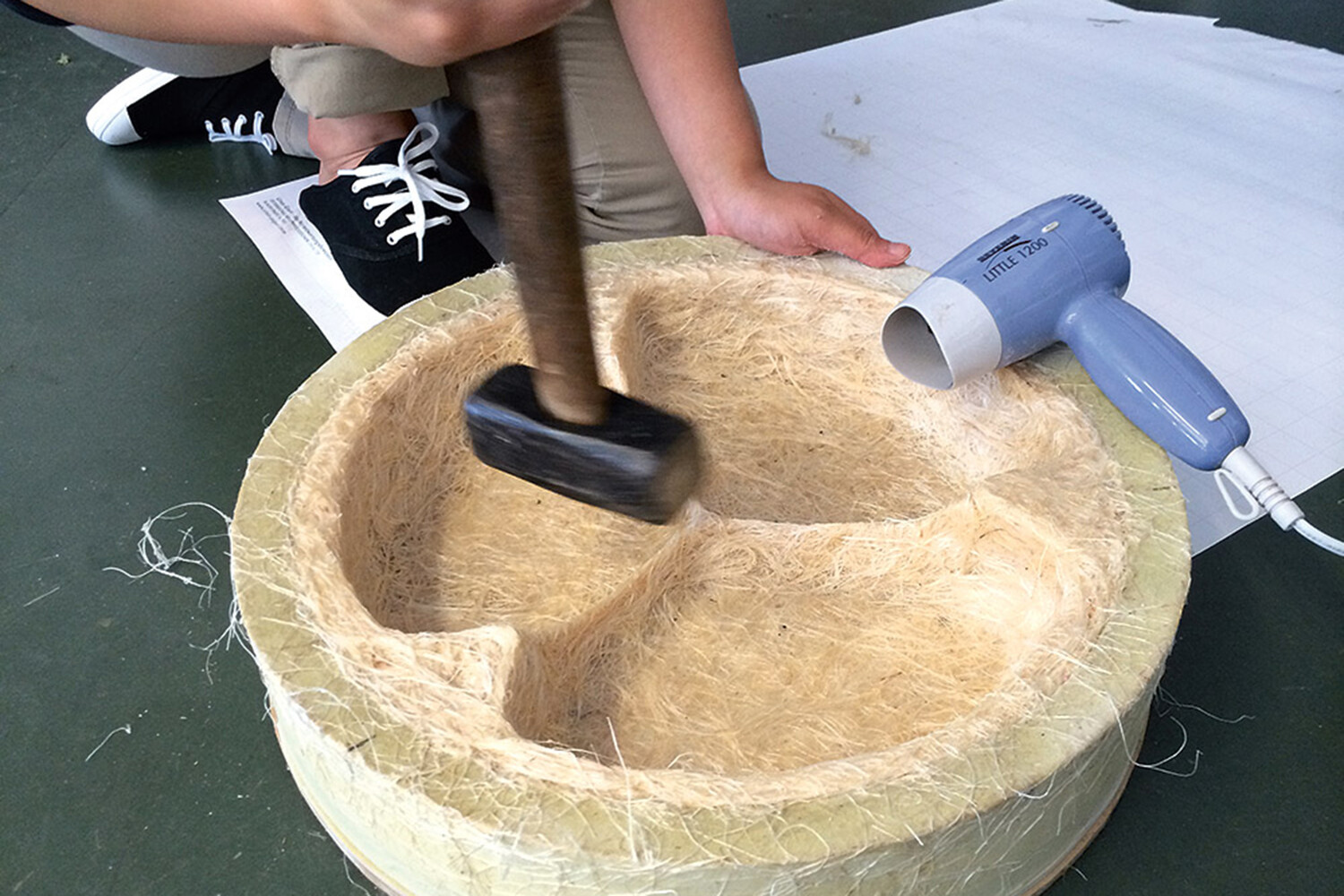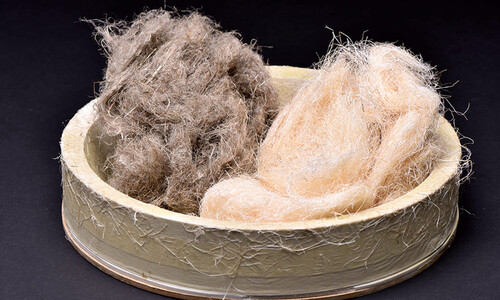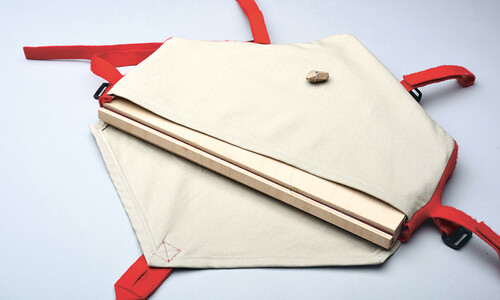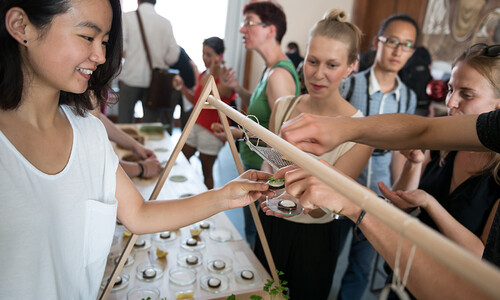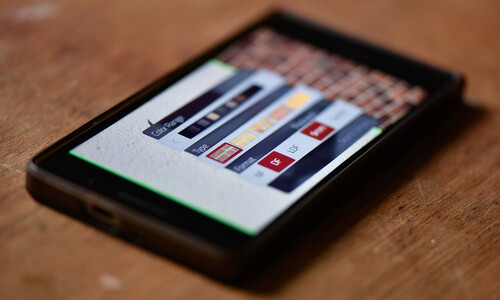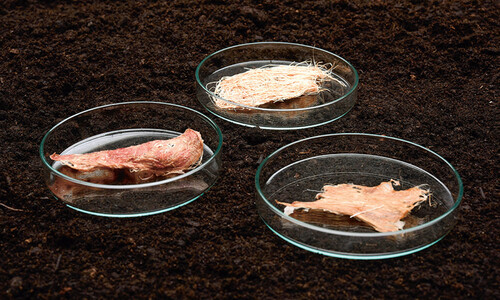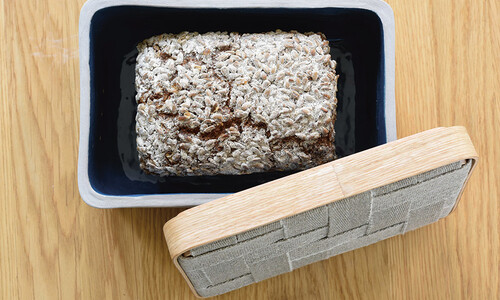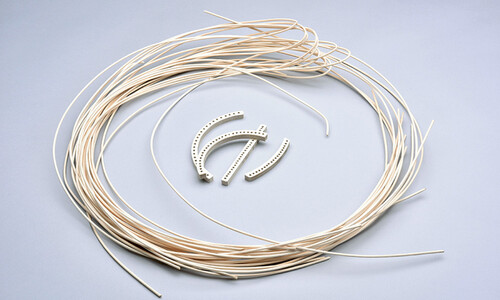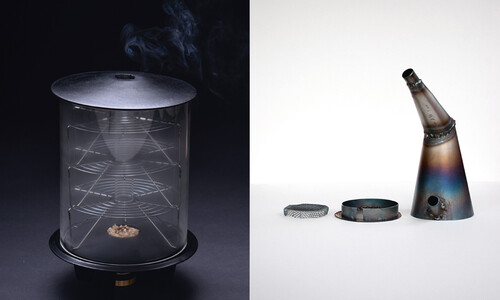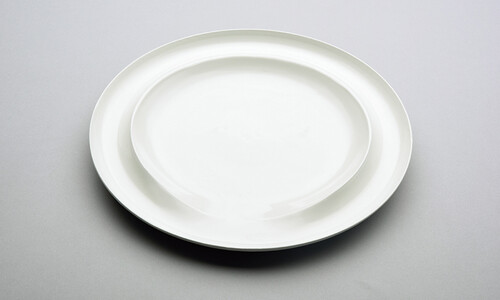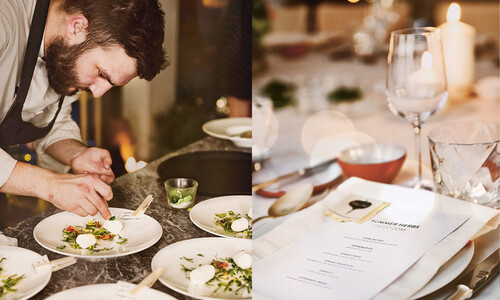Let’s take a look at this stool. Somehow it seems familiar. But we have never seen it quite like this. Is it even a real stool? Or just a life-sized model? Is it finished or still in the making? How much weight can it support? What does it feel like to sit on it? Will it leave marks on clothing, or will it lose substance when used?
Of course, it is an experiment — but it is not entirely clear what exactly the experiment refers to. That is part of the experiment as well. The starting point is simple: only natural materials are used, and they originate — at least potentially — from the Lausitz region. Industrial development once reshaped the area, and now one must figure out where to begin again. In this stool, modern thinking and a renunciation of artificial materials come together, representing at least a conceptual perspective for the future.
But that is not all. Just as the stool uses design as a medium to raise questions about high-tech culture, future materials, and regional/global identities, it also uses the material — its immediacy and the topics it conveys — to raise questions about design itself. What should design communicate? How do nature and culture come together in it? It almost seems as if elements are brought into the domestic sphere that we normally only encounter in forests or meadows. Here, however, they gain a new kind of value. The stool appears simple and primal, yet also puristic and refined.
It is important to understand that it is not finished — and perhaps, by definition, can never be finished. Not only does the material constantly change, never fully fixed or controllable in its exact form. It is a prototype by principle, capable of transforming into all kinds of appearances. An experiment taking place partly in reality and partly in the mind. The stool looks like low-tech, engages with high-tech (or “the future”), and is truly low-tech. It relates to cultural and ecological development scenarios in which science and technology are only one element — alongside our relationship with nature, new forms of craftsmanship, and the reflection of interconnections through design.
Just as the bio-stool appeals to the sensory level of thinking through its tangible presence, it also reconnects perception with new ways of thinking. Formally controlled, but in its materiality and the associative chains it triggers uncontrollable, it is an object in a transitional state — a process.

